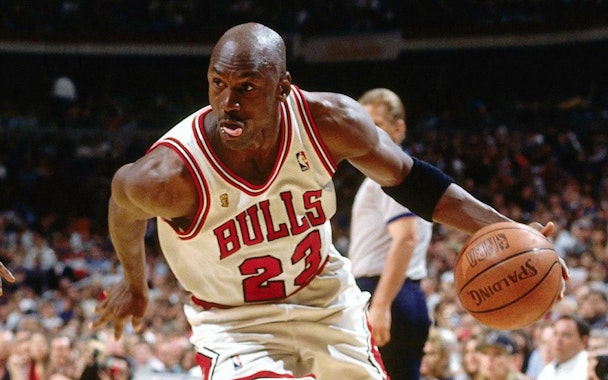‘Beyond the hood or corporate office’: What marketers can learn about diversity from Nike and its Jordan brand
Nike's Air Jordan - one of the first, and most iconic, celebrity-endorsed brands - first hit shelves just over 30 years ago.

Nike's Jordan brand was first devised in 1984
At the time it was a bold move into the diversity space for the company: while Michael Jordan may have been the greatest basketball player of all time, he was still an African-American in a time of racial inequality.
Fast forward three decades to a point of (supposed) tolerance and the brand is still going strong, striking a path beyond sneakers and into female fashion, sports accessories and even baby wear. But, amid this commercial success, how close has Nike kept diversity to the Jordan brand’s heart?
"Most of the people that come in contact with [Nike Jordan] really liken it to a brand that represents greatness and achievement and success and dedication,” Nike Jordan’s global director of advertising, Desmond Marzette, told The Drum after SapientNitro’s panel at Cannes.
"I think we have a really special like consumer - there isn't really an age demographic or even a race demographic because I think the impact of Mike goes beyond just the hood or just the corporate office.”
Just like sport itself, Nike Jordans are now seen as an equaliser - albeit one that retails for up to £160. But it’s not just who wears them, or the people that advertise them, that encapsulates diversity: the company staff is, according to Marzette, “incredible diverse - everybody from the footwear developers to the marketing team”.
Diversity by numbers
But the marketer also clarifies that this isn’t just the case for his sub-brand, it’s true for the whole of Nike. And this isn’t PR spiel: quite remarkably the company has published its employee diversity numbers since 2012 and in May revealed that minorities now make up the majority of its staff.
White workers now account for 48 per cent of the total, while twenty-one per cent of Nike’s labour force are black/African American. Eighteen per cent are Hispanic/Latino and seven per cent are Asian. Mixed heritage, Pacific islanders, American Indian or native Alaskan and ‘unknown’ make up the rest.
On the gender front, women make up 48 per cent of the workforce and 41 per cent of management roles.
It would be a great story to say that the legacy, strength and commercial impact of the Jordan brand led to this feat, however Marzette is cautious to confirm this. He does, however, point to “a ton of programmes” that breed diversity in the company.
“[Nike] not only welcome and groom minority communities but they actively search for a diverse working staff. Obviously it’s a global company that works in many different countries around the globe, and so it’s important that we’re able to articulate and communicate and understand those different cultures."
He added: “When you're on the Nike campus in Beaverton, Oregon, it's very clear that we are global company. The amount of accents in one boardroom is pretty impressive and I always find it really fun working with people who come from very, very different backgrounds than I, but who all have the same singular focus and goals for the brand story.”
The label's support of Black History Month reinforces this notion of racial diversity, however Nike doesn’t just stop there.
Marzette cites its Be True campaign as an example of going beyond race. He explained: “[The initiative] is specifically targeted for the LGBT community, and not only just in the apparel and in the design but also in the messaging of all of that products. It's very clear who we're speaking to.”
How could this pitch-perfect attitude to diversity be deeper entrenched, or even improved? Around the discourse of age, according to Marzette.
“I think we could afford to have more youth. I think that younger communities are more accepting, I think they’re more eager to bring in different voices and see how they mesh with their own, and I think some of our older clientele - the older executive, C-class folk...in marketing overall - are kind of part of the old school.
“So I think as advertising doors open a bit sooner to people coming right out of college, or maybe even to those who don't go to college but have a very strong point of view on culture, it’s going to make advertising that much more fun for everybody."

